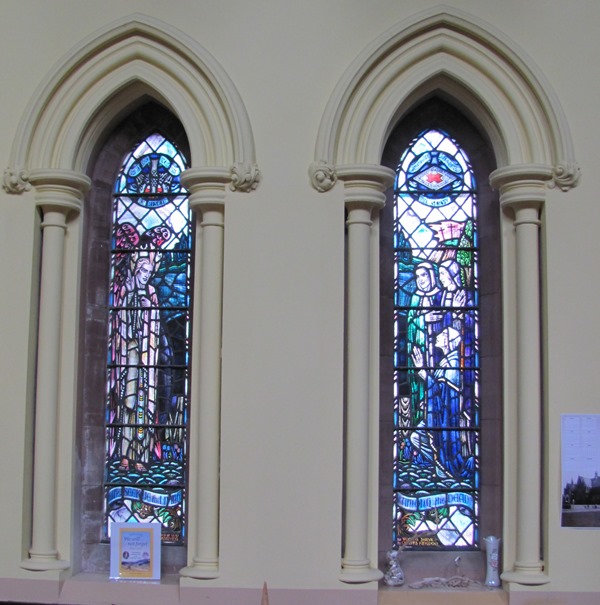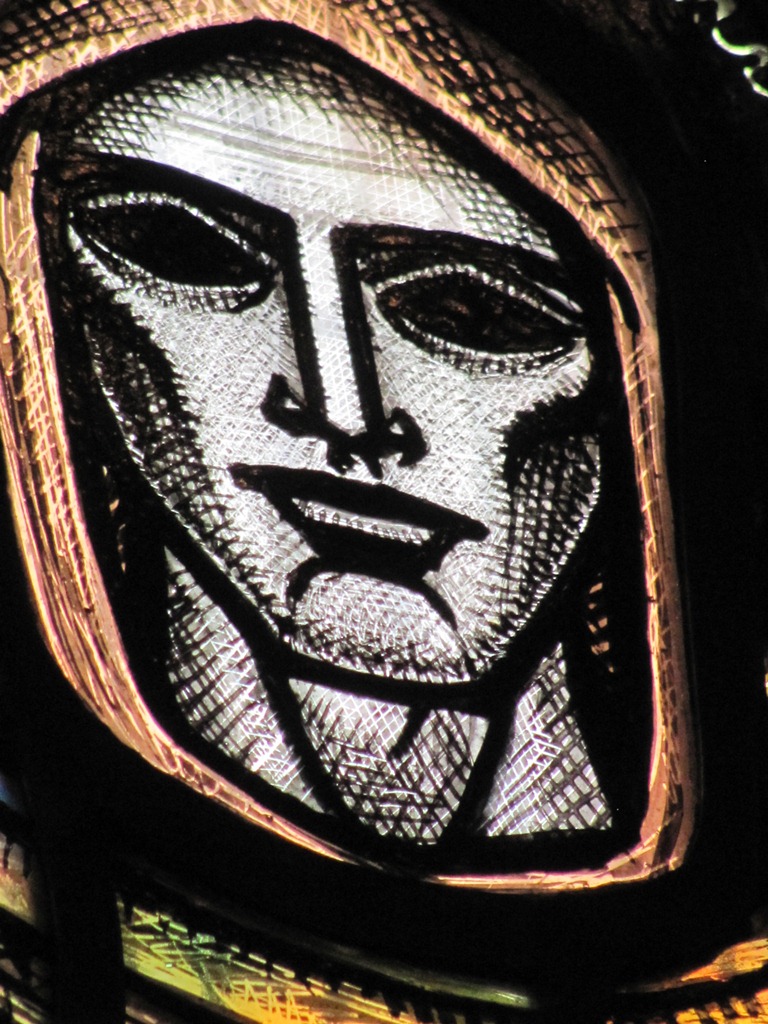It's funny that after you see something once, it seems to be every where. Seems that windows by the stained glass artist Gordon Webster are like that. A few weeks ago I saw a number by him in Dunblane Cathedral, then I realised one of our local windows in Kirkcudbright was by him, followed by Ruthwell Parish church not all that far away. There are six windows in all, dating from between 1958 to 1968, and are characterised by his chiseled faces and blacked out eyes which I've now become quite accustomed to.
When I went into St Columba's in Largs a month ago, he popped up again. Three windows by him, each in two panes. The interesting thing is that all three of these windows date to before the ones I've shown previously and none have blacked out eyes, though you can see his distinctive face shape appearing. They are shown here going back in time, the first is from 1955. I wonder if there's an exact cut off point somewhere between 1955 and 1978 where he stopped drawing in eyes.
This one is from 1952.
Here's one which predates the last window by 21 years. His style is completely different here. At this point he had just been in charge his late father, Alf Webster's, stained glass business for two years and had perhaps not had a chance to develop the later style.
In the later windows he signs his name "Gordon Webster" and the date. Here he signs it "G MacW W" and the date. The middle W stands for MacWhirter
It seems a reasonable time to move away from St Columba's but staying with Mr Webster. You really don't expect to be able to buy stained glass windows of this quality for a reasonable sum, but I found this pair on Edinburgh auctioneers, Lyon and Turnbulls', website as having been sold for £2200. I couldn't work out quite when they were sold but it can't have been that long ago if they are still on the site. £2200 has to be cheap for two windows by a recognised maker. These were made around 1950.











































